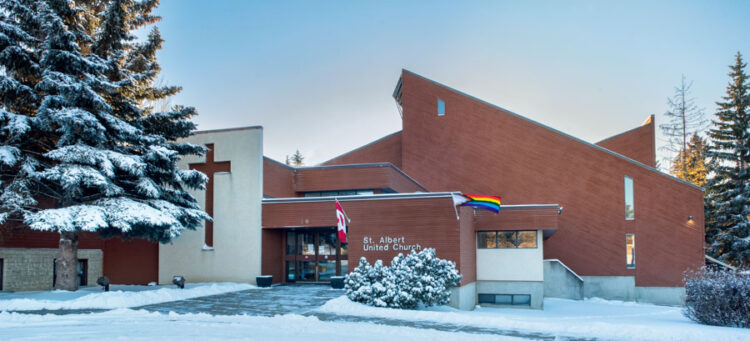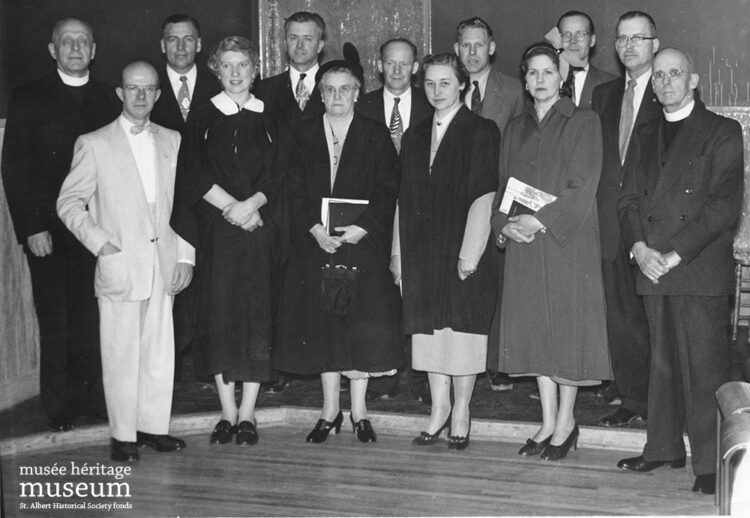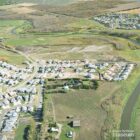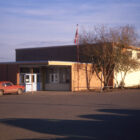
Then & Now
St.Albert United Church
By Gene Kosowan
January, 2023
Tracing St. Albert United Church’s path towards diversity
Over the years, St. Albert United Church has made the most of its mission statement that the facility should be more than just a place of worship. From its beginning during the 1950s, when the town’s population base included enough Protestants to warrant them a place dedicated to prayer, to modern times when diverse voices seek recognition of their own spiritual needs, the church has expanded its focus to meet those demands.
Today, the church welcomes not only Protestants, but also patrons representing diverse ethnicities, ages, languages, cultures, sexual orientations and identities. St. Albert United Church has witnessed nearly 70 years of change in the community it serves to accommodate these people. Since the only constant in life is change itself, the church remains a work in progress… in the name of progress.
1950s & 1960s
According to “The Church on the Trail” by David Geddes, St. Albert United Church was little more than an idea in 1953 when locals drafted a survey to determine the need for a Protestant church. Around that time, roughly 1,300 people lived in town with the only church in the community being a Catholic parish.
That would change the following year after meetings between 11 Christian denominations pursued the notion of a Protestant church until they formed the United Church of St. Albert, which had its first charter service April 18, with more than 130 patrons in attendance. That event took place in the Club Mocombo dance hall, which offered the space for free. A semi-retired minister named Dr. Villette conducted the first sermon there for $15.
Meanwhile, proponents for a new church started a building fund, which grew from the first wave of donations totaling $404.96. Thanks to the efforts of a fundraising organization, they raised enough to cover the $27,000 needed to create the new church by 1956, which began in earnest when sod was first turned. A year later, and thanks to the combined skills of several dedicated volunteers, a new church was finally built.
What wasn’t created through all that sweat equity was donated, such as the pews from McDougall United Church in nearby Edmonton and its first organ, provided by the Ronald Harvey family. Future Lieutenant Governor Lois Hole also had a distinct role in the church’s history by becoming its first choir director and organist.

1970s to 1990s
Once built, more Protestants moved to St. Albert and flocked to the church, prompting its administration to consider ways to accommodate that growth. By the 1970s, the basement of the church had already become too small for the 316 Sunday School students to the point where classes had to be moved to other locations that included Sir Alexander MacKenzie School, a community centre on Perron Street and Sir George Simpson School.
After 27 years, church attendance was crowding the confines of the building, which created the need for a larger facility. By 1983, construction began on the new building, which officially opened for services a year later. But the original church wasn’t abandoned as it was converted into the Friendship Hall.
2000 to Now
By the time the millennium rolled around, the whole concept of spirituality was at the crossroads with social consciousness intersecting religious thought, and St. Albert United Church became part of the national denomination’s initiatives to address those concerns. Setting those wheels in motion was the first same-sex marriage ceremony ever conducted in Canada, which took place in 2001 at a United Church in Toronto. Supporting the move was the St. Albert church, which has since conducted similar marriages and supported the LGBTQ+ community through participation in the Pride celebrations and creating space and programs for citizens previously alienated from the church.
St. Albert United Church also pursued the notion of spirituality and wholeness by creating an outdoor labyrinth in 2011. Based on the original stone labyrinth created inside France’s Chartres Cathedral around 1200 A.D., the St. Albert version was crafted on the lawn inside a circle roughly 12 metres in diameter. It consists of a maze leading to the centre of the circle, providing visitors to the church an opportunity to meditate and pray.
In 2017, the church was also involved in another consciousness-raising project that’s not on the premises. In recognition of aboriginals who survived the horrid abuses in Residential Schools, one of the darkest chapters in Canada’s history, former United Church minister James Ravenscroft suggested the creation of the St. Albert Healing Garden, located on the Red Willow Trail on the norther banks of the Sturgeon River. It also acknowledges the city’s drive to foster the well-being of First Nations, Métis, and Inuit citizens who contributed to the community’s development.
The church also reinforced its commitment to public safety when it closed its doors in March 2020 in response to the pandemic, with live services replaced by electronic ceremonies until September. However, three months later, St. Albert United Church had to shut down again when variants of COVID-19 threatened the community. The church resumed normal operations in March 2022 after the Alberta government lifted restrictions. t8n
ST. ALBERT UNITED CHURCH
20 Green Grove Drive
780-458-8355













